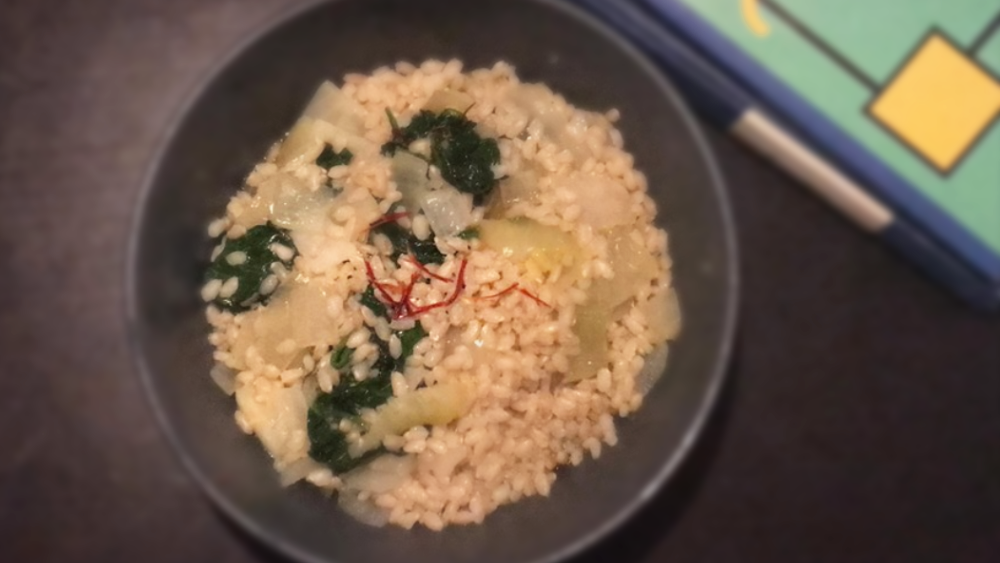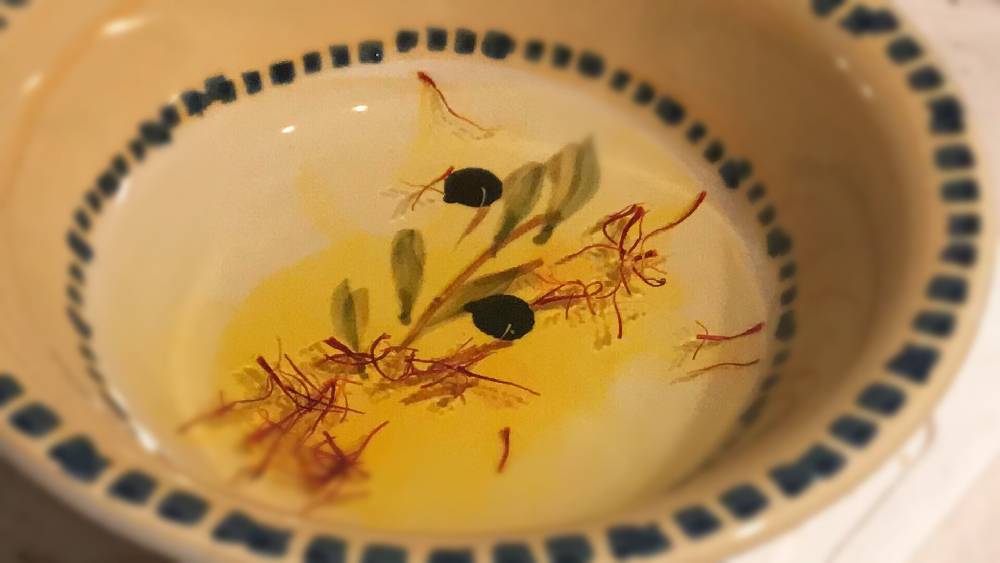
Basmati Rice with Saffron, Spinach, and Onions
Known as the world's most expensive spice, Saffron has been used in many ways throughout its long history. From curing melancholia, to perfecting rice dishes in Kashmir, the mystique behind Saffron has led to numerous ways of relating to the spice, and even today it is a common staple of many Asian and European dishes.
Saffron is essentially a collection of stigmas from the flower Crocus Sativus, which are then dried and packaged as a spice. This history of Saffron begins as late as three thousand years ago, and was likely first cultivated around Greece. Crocus Sativus quickly spread, however, and could eventually be found in most parts of the world. Today, 90% of Saffron production takes place in Iran, with surrounding Middle Eastern countries making up much of the remainder. Saffron has a long history in Iran, and it is said that Alexander the Great discovered Saffron during his campaign in Persia, and would use it for therapeutic purposes.
For the early Phoenicians, saffron was said to be able to cure melancholic moods, and they frequently employed it as a dye. The practice spread into East Asia, where Buddhist monks coloured their robes a Saffron-like colour – although, because of the costliness of saffron, the spice turmeric is usually used instead.
Transparency statement: I've never bathed with saffron, I've only eaten it. And I wouldn't recommend mixing the two.
In the Himalayan cultures of Kashmir, Nepal, and Tibet, saffron has long been a valuable element in their cuisine. Recently, I've been reading two books that talk to some degree about Himalayan culture and trade. The first is Trans-Himalayan Caravans by Janet Rizvi, and the second is Heart of the World by Ian Baker. The books both mention the symbolic importance of Saffron in Himalayan culture. The Lo-pchak missions, for instance, which were operating until the Chinese occupation of Tibet in the 1940s, tasked a group of Ladakh merchants with the responsibility of journeying across the Himalayas in order to offer ceremonial gifts to the Dalai Llama. Included in the gifts was generally a large amount of saffron. As they journeyed toward the Tibetan capital of Lhasa, the merchants would often buy and sell other goods, such as incense, turquoise, herbs, and sugar.

Saffron taking a bath
Saffron is an unusual spice, and is usually sold in its original, preserved form, in order to retain its distinct, bitter-sweet aroma. This means when you purchase it, you need to do a little extra preparation in order to bring out the full extent of the spice's powers.
A common method of preparing saffron is to soak it in hot water for 20 minutes to 2 hours, depending on how much time you have and how enthusiastic you are about bringing out the spice's flavour. I soaked my saffron that I bought for probably around half an hour. I would have soaked it longer, but to be honest I was too hungry to wait.
Saffron is used in thousands of different dishes, from cuisines from around the world. Generally, however, Saffron is said to go best with grain-based dishes. So I made a simple rice dish, and threw some saffron on-top for flavour. The taste, a kind of warm, pleasant bitterness, is best when used sparringly. As with most luxuries, you need to restrain your use of saffron, or else you'll break the bank, dull your senses, and develop an unsatiable appetite. Please, avoid becoming the Marquis de Saffron, and consume your spices in mindful moderation.
Here are the two books I mentioned in the article, if you're interested in reading more about the Himalayas. The Rizvi book is very detailed, and gives specific indications about what items were traded, the routes that were taken, and the prominent merchants and families involved. The Baker book deals more spiritual life in Tibet, but is also a good account of the geography of the Himalayas, and is written in a more personal voice. The last book is one I read a long time ago, which is also a personal account of a Westerner's experience of the Himalayas, albiet from a much earlier time period. It's a good read, and the author has some lovely prose describing the Himalayan environment.
Trans-Himalayan Caravans - Janet Rizvi